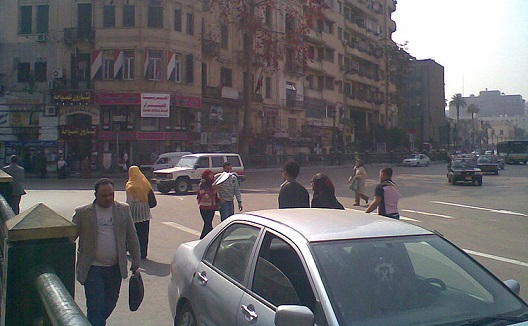 The January 25 revolution brought Egypt nothing more than trouble and turmoil, bringing Egypt to the brink of civil war and collapse–or so the thinking goes among the firmly entrenched authoritarian mindset controlling the country. Once a place inspired by a revolutionary vision to reinvent itself, Egypt’s new government led by President Abdel Fattah al-Sisi has decided that Egyptians are not fit for free thinking and expression. Instead of nurturing new ideas, authorities instead have clamped down on public space in a way not seen since the 1960s.
The January 25 revolution brought Egypt nothing more than trouble and turmoil, bringing Egypt to the brink of civil war and collapse–or so the thinking goes among the firmly entrenched authoritarian mindset controlling the country. Once a place inspired by a revolutionary vision to reinvent itself, Egypt’s new government led by President Abdel Fattah al-Sisi has decided that Egyptians are not fit for free thinking and expression. Instead of nurturing new ideas, authorities instead have clamped down on public space in a way not seen since the 1960s.
Journalism, cultural events, art, education, religion, and civil society have faced serious new restrictions on their ability to conduct activities away from government oversight. Sarah El Sirgany, nonresident fellow at the Rafik Hariri Center for the Middle East, recently chronicled the different ways by which Egyptian authorities have increased their grip over public thinking in her blog post, “The Ongoing Campaign to Restrict Egypt’s Public Space.” She notes the degree to which journalists now are subject to cumbersome bureaucratic procedures, how music and arts festival organizers risk prosecution by ignoring interior ministry warnings to obtain approval on security grounds, and how the ministry of endowments has reasserted control over religious space to “combat extremism, atheism and Shi’ism.” Perhaps most damaging, civil society that enjoyed great leeway to fill the gaps left by the government to fulfill basic public services and monitoring now braces itself for a crackdown in the wake of a warning to register with the government or face repercussions.
The government risks diverting unnecessary funds towards herding an entire population rather than providing the social improvements that would make partners out of potential dissidents. It goes further in stripping Egyptians of their ability to contribute to social challenges, replacing it with nothing. As more avenues for free expression fall to a security-minded bureaucracy, it begs the question: where will all this pent up energy go?
Read Sirgany’s article on EgyptSource here.
Image: Tahrir Square, Egypt, March 2010. (Photo: Wikimedia)
